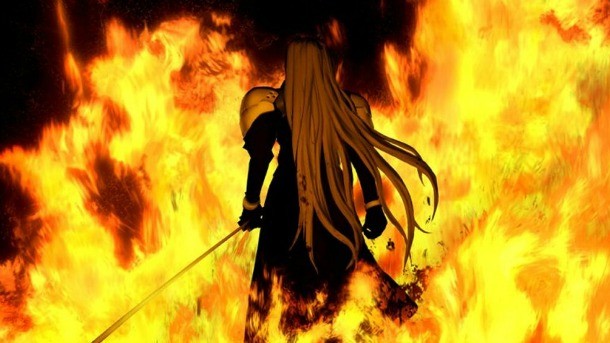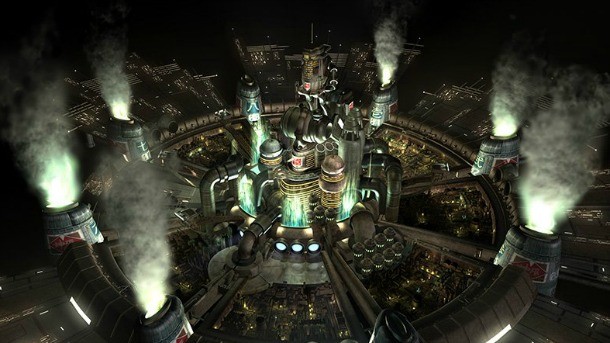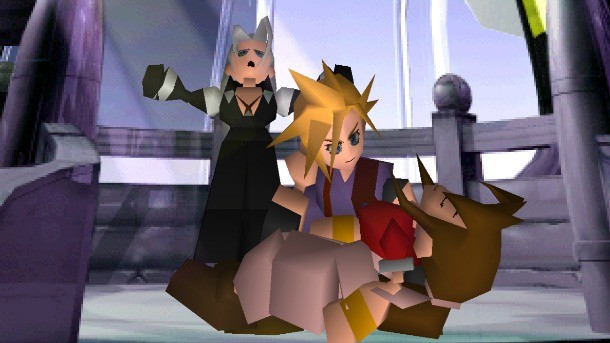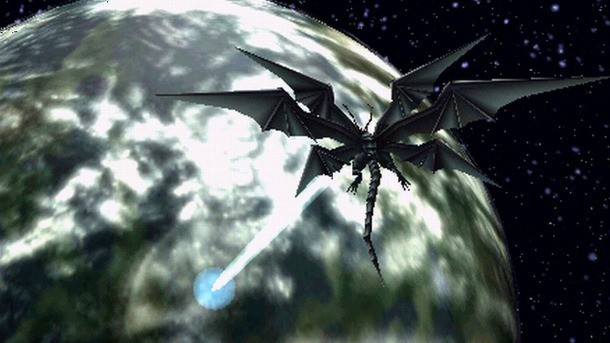Our extra-large special edition is here. Subscribe today and receive the 25% longer issue at no extra cost!
The Essentials – Final Fantasy VII

Welcome to another installment of the Essentials, Game Informer’s weekly look at the best titles in gaming history. We curate this list to include the medium’s must-play experiences, spanning multiple genres and generations. The games might be especially innovative, groundbreaking, or significant to the author – but they’re all what we consider to be “required reading.”
This weekend’s entry focuses on Final Fantasy VII, one of the most popular and influential titles in Square Enix’s juggernaut series. After years of dominating the 16-bit RPG scene, the franchise transitioned to 3D for this entry (and finally resolved the weird numbering disparity between the U.S. and Japanese entries) and became the best-selling Final Fantasy game to date. After you’re done reading about it, check out our previous Essentials features on titles like The Legend of Zelda: A Link to the Past, BioShock, and Super Mario 64.
Release Year: 1997
Publisher: Square/SCEA
Developer: Square
Released For: PlayStation, PC, PlayStation 4 (Coming Spring 2015)
Trailer for the PC version of Final Fantasy VII
Numbered releases in the Final Fantasy series have become few and far apart over the last decade, but the entries were at their most frequent and consistent during the original PlayStation era. That certainly has something to do with Final Fantasy VII, which kicked off a new generation of role-playing by setting a high bar for the future of the genre. Final Fantasy was popular before, but the astounding visuals and engrossing story of FF VII made it the topic of countless conversations everywhere, from living rooms to school cafeterias.
The technology alone isn’t what makes FF VII great, but it deserves a lot of credit for attracting the attention of people who might have otherwise overlooked it. When you were accustomed to the 16-bit sprites of the SNES and Genesis, the 3D characters and rendered cutscenes seemed like an impossible feat. Final Fantasy VI (which is also great) was a perfectly polished and refined example of the 2D RPG, but Final Fantasy VII's 3D overworld to explore, fully animated characters, and dynamic camera angles during battle, it almost felt like a brand new kind of game. As it turns out, strides like that served as the foundation of the genre for years – and many of the traditions continue today.
Even if you strip away all of the visual flair, FF VII is an amazing experience. The story follows Cloud, the quiet-yet-capable soldier who gets mixed up with a band of rebels fighting against the evil Shinra corporation. The early hours take place in Midgar – the bleak and industrial city that serves as the seat of Shinra’s power. Though this setting isn’t as evocative as we see in modern games, the tiered city is pervaded by a sense of desperation and hopelessness; you grow to understand the effect of Shinra’s corrupting influence, which means you know how bad things would get for the rest of the world if you don’t fight back.

In Midgar, players see a stark separation between the rich and the poor
Apart from some ominous references early on, you’re introduced to the main villain shortly after escaping Midgar – though these days, he hardly needs any introduction. Sephiroth is simply one of the most memorable figures in video games. Yes, his appearance is very “late-‘90s badass,” but he’s more than a huge sword and a long coat. His ultimate goal – to kill the planet and become a god – sounds pretty typical. However, unlike previous Final Fantasy villains, he isn’t immediately presented as an evil adversary. Players see an arc to Sephiroth’s story, which turns him into a more nuanced – if not sympathetic – character; he wasn’t born with the desire to destroy, but players see his descent into madness through a series of events and flashbacks. Sephiroth wasn’t the first bad guy with complicated motivations, but the game’s popularity meant that more players had a chance to see the advantages of villains who don't just want to obliterate existence for the fun of it – or if they do, at least you understand why.
No discussion of Final Fantasy VII is complete without a nod to its defining moment: The death of Aeris (a.k.a. Aerith) at the end of disc one. The alarming scene that depicts Sephiroth descending from above and impaling her has driven more than one gamer to tears. Not everyone gets so emotionally invested in video game characters, but even if Aeris’ death doesn’t make you cry, it’s still significant. In most games (especially at the time), you could proceed with certainty that your characters would be okay, no matter what disasters befall them. Sure, some supporting cast members may not make it, but your main party can rest assured. Did Crono get killed by Lavos? Don’t worry – you can bring him back to life. Except with Aeris, it’s for real; there’s no sidequest later where you can resurrect her and live happily ever after. Killing a lead character may seem brutal, but a world with actual consequences is more interesting and unpredictable (as any Game of Thrones fan can tell you).

Always travel with a Phoenix down, in case of an emergency
The story is a huge draw for the RPG genre, but Final Fantasy VII is also a step forward on the gameplay front. As part of a long-running series, this entry infuses classic traditions with new ideas to create mechanics that feel fresh. For example, the Materia system allows players to have more control over character progression. In previous games, you either knew a spell or you didn’t; FF VII treats spells a bit like equipment, allowing you to level them up individually and pass them among your party members. Not only that, but you can start to combine Materia for different effects, like auto-countering with certain abilities or enabling you cast a spell four times in row. This system ramps up in complexity at a perfect pace, so you’re continually discovering new facets right when you think you have it all mastered.
Summoned monsters are also tied to Materia, and Final Fantasy VII began the infamous trend of dragging these cinematic sequences out for as long as possible. However, when the game first came out, most people didn’t see them as annoying unskippable cutscenes; like the FMV movies, long summons felt more like rewards. They showed off how gorgeous the game was, delivering impressive attacks with stunning effects. Personally, I remember thinking that the Bahamut ZERO summon sequence was about the coolest thing I had ever – or would ever – see in a video game.

A full minute long, and worth every second
Final Fantasy VII is also the first formal appearance of Limit Breaks (though a kernel of the idea was present in FF VI). These special attacks take time to build up, but pay off through major damage and powerful effects. You can’t rely on them too much; your best battle strategy involves abilities that you always have available. However, it’s hard to beat the thrill of unleashing one of these moves (like Cloud’s ridiculous Omnislash) against a particularly difficult boss.
Speaking of tough fights, you can find several of them to take down in your post-game exploits. This isn’t the first time a Final Fantasy game included optional superbosses, but it wraps them up in lots of other activities. If you want a shot at beating Emerald Weapon and Ruby Weapon, you definitely want to get the Knights of the Round summon. However, that requires several hours of meticulous chocobo breeding and racing at the Gold Saucer. And even once you take down the bosses, you can still spend ages leveling up your Materia to create the ultimate Master Materia. So, seeing the credits roll in FF VII doesn’t mean you need to be done playing.
Final Fantasy VII is a landmark title that steered the course of the genre with its innovations in visuals, gameplay, and storytelling. Even if you haven't played it (which you should), you've probably seen its influences in multiple RPGs over the last 15 years. I could just leave it at that, but when it comes to FF VII, there’s only one appropriate way to conclude: One Winged Angel.

Get the Game Informer Print Edition!
Explore your favorite games in premium print format, delivered to your door.
- 10 issues per year
- Only $4.80 per issue
- Full digital magazine archive access
- Since 1991










